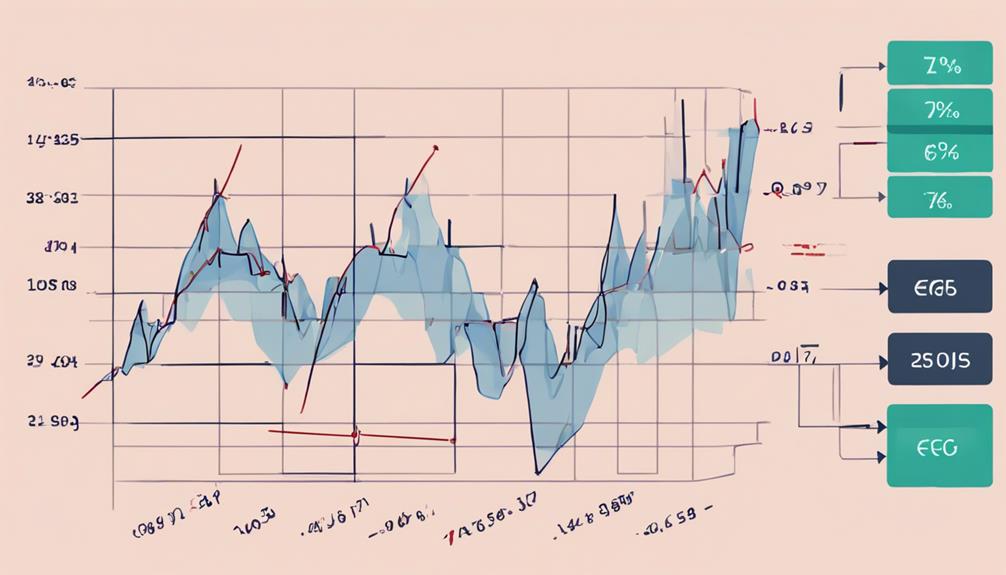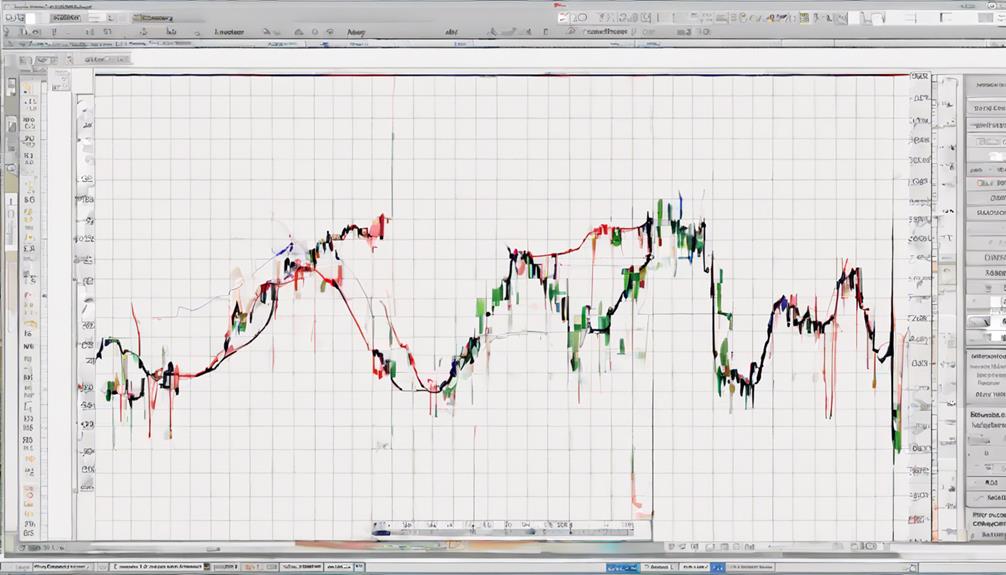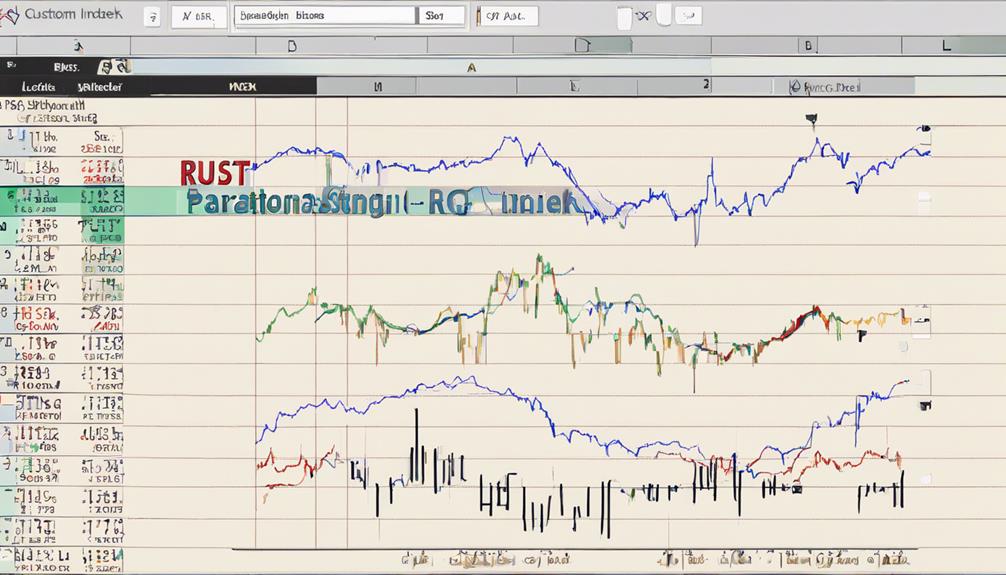To master Relative Strength Index (RSI) calculation, first grasp the basic concept and how it normalizes gains and losses. Understand the importance of averaging gains and losses in determining relative strength. Utilize normalization to convert values into 0 to 100 range, aiding in trend identification. Practice with historical data to hone calculation skills. Customize RSI parameters by adjusting lookback periods and levels for best results. These steps lay the foundation for proficient RSI usage and enhanced trading strategies.
Basic Concept of RSI Calculation
The fundamental principle behind the calculation of the Relative Strength Index (RSI) lies in averaging the upward and downward price movements observed over a specified period, typically 14 days. The RSI formula involves normalizing the average gains and losses to establish a scale ranging from 0 to 100, aiding traders in evaluating the strength of price changes.
By analyzing the relative strength (RS) between average gains and average losses, the RSI calculation provides insight into potential overbought and oversold market conditions. Traders can adjust the lookback period within the RSI calculation to align with their trading strategies and desired timeframes, allowing for flexibility in decision-making.
Understanding the RSI calculation process is important for traders seeking to develop effective trading strategies based on identifying trends and potential reversal points in the market. The RS formula serves as the foundation for the RSI calculation, offering a quantitative measure to evaluate price strength and momentum accurately.
Understanding Averaging Gains and Losses

When calculating the Relative Strength Index (RSI), the process involves averaging gains and losses over a specific timeframe, typically 14 days. This step is vital in understanding the underlying strength or weakness of a stock or asset. Here's a breakdown of how this calculation works:
- Average Gains: The average gain is determined by summing up all the gains during the specified period and dividing that total by the number of periods.
- Average Losses: Similarly, the average loss is calculated by summing all the losses over the same timeframe and dividing by the number of periods.
- Relative Strength: The relative strength (RS) is then found by dividing the average gain by the average loss.
Normalizing Averages Into an Oscillator

To further refine the Relative Strength Index (RSI) calculation process, the normalization of averages into an oscillator plays a pivotal role in converting Relative Strength (RS) values into a 0 to 100 range. This conversion is essential for understanding overbought and oversold conditions within the market.
The RSI oscillator, derived from the RS calculation, provides traders with a clear indicator of potential entry or exit points based on overbought and oversold levels. By visualizing these levels, traders can develop a more effective trading strategy that capitalizes on momentum shifts indicated by the RSI oscillator.
Understanding the averaging process that underpins the RSI calculation is vital for utilizing this momentum indicator in a way that enhances overall trading performance.
Practice Calculating RSI With Historical Data

Utilize historical price data of a chosen asset, specifically the daily closing prices from the past 14 days, to practice calculating the Relative Strength Index (RSI).
When working with this data, follow these steps:
- Calculate the average gain and average loss over the 14-day period to determine the Relative Strength (RS) value for each day.
- Apply the RSI formula, which involves deriving the RSI value by calculating the ratio of average gain to average loss.
- Plot the RSI values on a chart to visualize the oscillator's movements, enabling the identification of potential overbought or oversold conditions.
The Relative Strength Index (RSI) is an important momentum indicator in technical analysis. By analyzing the RSI values in relation to the zero line and observing oscillator movements, traders can make informed decisions about market conditions, including identifying overbought and oversold conditions. Practice with historical data will enhance your understanding of RSI calculations and interpretation.
Customizing RSI Parameters for Trading Strategy

Customizing the parameters of the Relative Strength Index (RSI) involves adjusting the lookback period to tailor the indicator to different trading styles and timeframes. Traders can experiment with shorter or longer periods to increase or decrease sensitivity to price movements, thereby adapting the RSI indicator to their specific needs. Additionally, changing the default overbought and oversold levels of 70 and 30 can help fine-tune the RSI to better suit various assets or market conditions, providing more accurate signals for potential trading opportunities. By optimizing RSI parameters through backtesting and analysis, traders can enhance the effectiveness of this momentum indicator in capturing potential reversals and trend changes based on their risk tolerance and trading objectives. Adapting RSI parameters for different market environments and trading strategies is essential for maximizing the indicator's utility and improving overall trading performance.
| Customization Steps | Benefits |
|---|---|
| Adjust lookback period | Tailor RSI to different trading styles and timeframes |
| Experiment with levels | Increase sensitivity to price movements |
| Change overbought/oversold levels | Fine-tune RSI for specific assets or market conditions |
| Optimize parameters through backtesting | Enhance indicator effectiveness for trading strategies |
Frequently Asked Questions
How to Calculate RSI Step by Step?
To calculate RSI step by step:
Start by computing the Relative Strength (RS) through averaging gains and losses.
Then, utilize the RS in the RSI formula: RSI = 100 – (100 / (1 + RS)).
This calculation results in an oscillator ranging from 0 to 100, aiding in identifying overbought and oversold conditions.
Understanding these steps is essential for interpreting RSI signals, analyzing RSI charts, identifying trends, and utilizing RSI in historical data analysis and backtesting strategies.
How to Calculate Relative Strength?
When calculating relative strength, it is essential to determine the ratio of average gains to average losses over a designated timeframe, typically 14 days. This is foundational in computing the Relative Strength Index (RSI), a key tool in technical analysis.
How Do You Study Relative Strength Index?
Studying the Relative Strength Index (RSI) involves interpreting RSI indicators, analyzing RSI trends, and patterns, and understanding RSI signals and momentum.
Additionally, exploring RSI divergence, adjusting RSI settings, and backtesting RSI strategies are vital aspects of mastering RSI analysis.
What Is the Best Strategy for RSI Trading?
The best strategy for RSI trading involves a holistic approach that integrates RSI strategies with other technical indicators to confirm trading signals.
Customizing overbought and oversold levels based on historical data, analyzing divergence patterns, conducting trend analysis in different timeframes, adjusting for volatility, and incorporating support/resistance levels are key elements.
Effective risk management through stop-loss orders and setting profit targets further enhance the strategy's success rate.
Conclusion
To sum up, mastering the relative strength index calculation involves understanding the basic concepts, averaging gains and losses, normalizing averages into an oscillator, practicing with historical data, and customizing parameters for trading strategies.
For example, if an investor analyzes the RSI of a stock and notices it is consistently above 70, indicating overbought conditions, they may decide to sell their position to take advantage of potential downward movement in the stock price.
